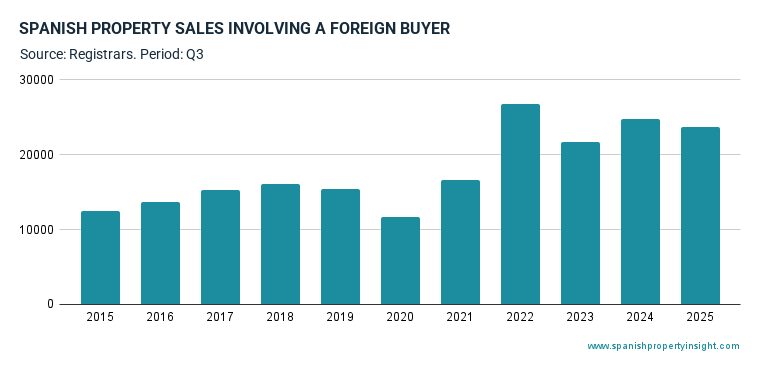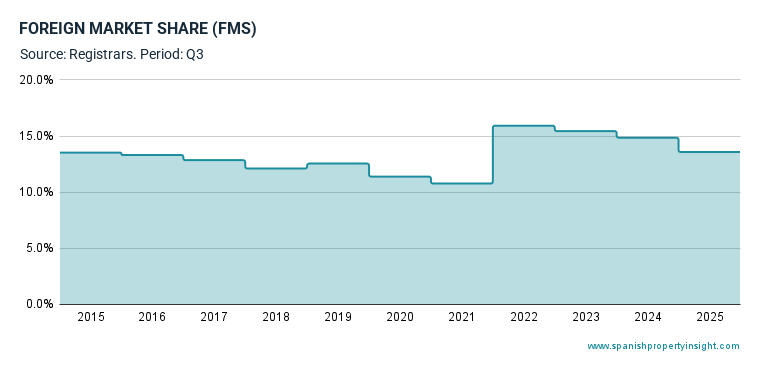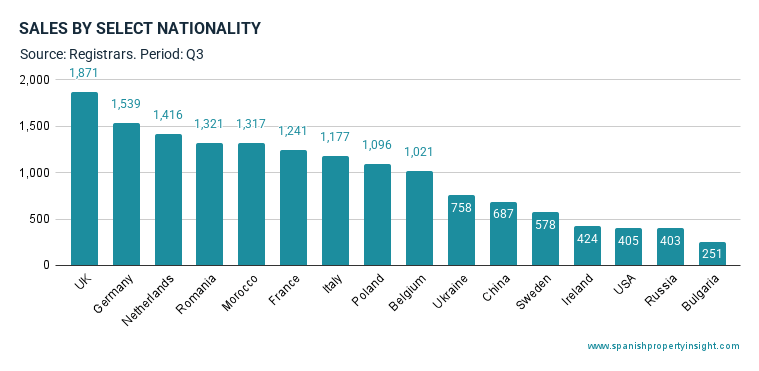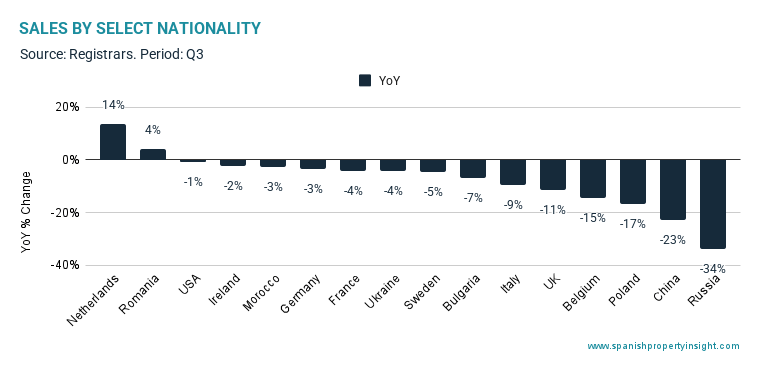

New data from Spain’s Land Registrars show that foreign demand for Spanish homes eased slightly in Q3 2025, though it remains well above historical norms.
Foreign sales slip 4% year-on-year
There were just under 23,700 home purchases by foreign buyers inscribed in the Land Registry during the quarter, down 4% compared to the same period last year. Even so, foreign demand was still 36% higher than the ten-year average for this quarter — proof that international appetite for Spanish property remains robust despite the broader slowdown in Europe.
Foreign buyers accounted for 13.6% of all home sales in the period, down from 14.9% a year earlier. Over the past decade, the foreign market share (FMS) has ranged from a low of 10.8% to a high of 15.9%, so the latest figure remains firmly in the upper half of that range.


British still lead, but the Dutch steal the spotlight
The British retained their long-standing position as the largest group of foreign buyers, with 1,871 purchases — roughly 8% of all foreign transactions — despite an 11% year-on-year decline.


Germany followed with 1,539 sales (-3%), then the Netherlands with 1,416 (+14%). Dutch demand was the star performer this quarter, recording the fastest growth among major markets. Romania and Morocco also saw small gains, up 4% and 2.5% respectively, while most other large markets were slightly down.
Among EU countries, France (-4%), Italy (-9%), Belgium (-15%), and Poland (-17%) all fell, while outside the EU, the United States (-0.7%) and Morocco held steady. Russian demand continued to collapse (-34%), and China registered a steep decline (-23%).


Still above the long-term trend
Despite the quarterly dip, foreign demand remains far stronger than the historical norm. With one in seven Spanish homes still being bought by a non-Spanish national, the international component of the market remains a defining feature — particularly in coastal and island regions.
However, if you strip out the distortions of the pandemic period — the slump of 2020 and the surge of pent-up demand that followed — this quarter marks the first meaningful decline in foreign sales since 2019, perhaps the first genuine cooling in underlying demand. Whether this signals a turning point or just a pause remains to be seen, but it’s the clearest slowdown in the foreign segment since before the pandemic reshuffled the market.